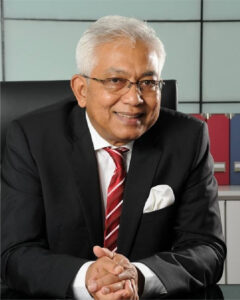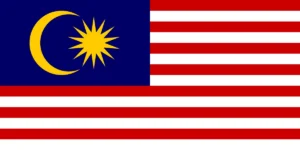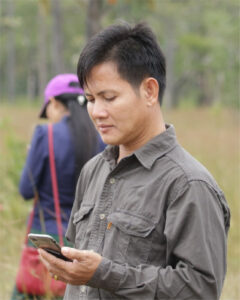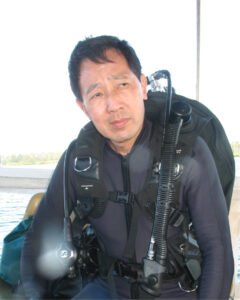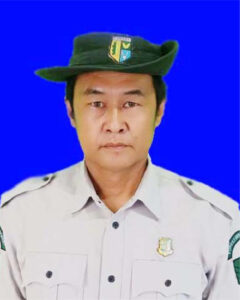Geoheritage expert champions conservation geology
With most people having little to no understanding of geology except for the fact that it deals with rocks and minerals, it is one of the most unappreciated branches of science and is often related to the exploitation of natural resources.
It was this misconception that prompted Prof. Ibrahim Bin Komoo to work on showcasing the value of geological resources. “When we study geology, we are actually describing the history of the earth. The history of earth is the beginning of the history of all life including plants, animals, and human beings,” said Dr. Komoo, professor emeritus at the Universiti Kebangsaan Malaysia’s (UKM) and former principal fellow at the university’s Institute for Environment and Development (LESTARI), in an interview a few years ago.
He explained that “a geologist has always been known as a scientist who helps those involved in exploitative activities such as mining, construction, and oil and gas. We are considered the backbone behind people who exploit resources. But what we actually do is advise them on how to approach their work in a more sustainable manner. For example, I advise engineers on how to build roads and highways that are more effective, safe and environmentally friendly.”
A geoheritage expert, Dr. Komoo has acquired knowledge in the fields of the environment, natural heritage conservation, use of natural and cultural heritage for tourism and sustainability science. This knowledge has been developed not only for the benefit of academia but also to be communicated to and used by the general public.
“He is an academic who strikes balanced contributions between knowledge generation, knowledge sharing with fellow experts, and knowledge transfer to society,” said Tan Sri Zakri Abdul Hamid, chairman of Atri Advisory, science advisor to the sixth prime minister of Malaysia, and 2017 ASEAN Biodiversity Hero.
Dr. Komoo’s exploration and knowledge-sharing in the field of environment and sustainability began when he was appointed Founding Associate Director of LESTARI in 1994, a research institute that pioneered the development of multi-disciplinary knowledge and sustainability practices, particularly related to urban ecosystems, biological diversity, community economics and social well-being.
In 1996, he obtained a research grant entitled ‘geoheritage development and its utilization for tourism’. Through this grant, he and his team have developed new knowledge in the field of geoscience, namely Conservation Geology, which covers the components of geological diversity (a concept similar to biological diversity), geoheritage, geoconservation, geotourism, and geoparks. All of these concepts have evolved rapidly nationally and globally, become mainstream and have been successfully translated for the benefit of society.
Based on this project, Dr. Komoo also established the Malaysia Geological Heritage Group (KWGM), which brings together researchers and practitioners from universities, government agencies, and the private sector to jointly develop geological heritage sites (geosites) for conservation and new tourism products.
In 1997, he and colleagues from Europe and the Earth Sciences Division of UNESCO Paris introduced the geopark concept as a tool to conserve geological heritage (geosites), while utilizing geotourism, especially in rural regions. This became a significant turning point in geoheritage development for the benefit of society. Two years later in 1999, he was involved in preparing a paper entitled, ‘Feasibility Study on the UNESCO Global Geopark Programme’ to be presented at the UNESCO Executive Board Meeting.
In 2003, he was appointed a Founding Bureau Member of the Global Geoparks Network (GGN), an advisory body to certify the approval of Global Geopark membership. In 2013, he was elected Vice President of the Global Geoparks Network Association, an international body for global geopark development. In 2015, the geopark was elevated to a full UNESCO program and he was appointed Founding Vice Chairman of the UNESCO Global Geoparks Council.
At the national and Asia Pacific levels, he is a pioneer of the geopark agenda. In 2007, he succeeded in making Langkawi the first Global Geopark in Malaysia and Southeast Asia. In the same year, he successfully organized the first Asia-Pacific Geopark Symposium in Langkawi. At the symposium, he was appointed Founding Chairman of the Asia-Pacific Geoparks Network (APGN). From 2007 to the present, he has been frequently invited to present policy papers, advisory, training, evaluation, and re-evaluation of global geopark development in China, Japan, Vietnam, Korea, Indonesia, and Thailand. Currently, all of these countries have their own UNESCO Global Geoparks.
The Geopark Vision has assisted in the conservation and utilization of the biodiversity that is within the geopark territory. Geoparks focus on ‘integrated heritage’, particularly the true meaning of natural heritage, which is the link between physical (geological) and biological heritage in a landscape or ecosystem, and subsequently the combination of natural and cultural heritage. For example, in Langkawi, he, together with the Forest Department of Peninsular Malaysia (JPSM), has introduced the concept of Geoforest Park, which is a Permanent Forest Reserve area that also contains a high geoheritage value. Today, Machinchang Cambrian Geoforest Park; Kilim Karst Geoforest Park; and Dayang Bunting Marble Geoforest Park have not only been successfully conserved in an integrated manner but have become leading ecotourism and geotourism sites in Malaysia.
To further expand the idea of integrated heritage, particularly biology and geology, he has developed the concept of “bio-geotrail” as a knowledge-based sustainable tourism product. He and his team, with the support of the Langkawi Development Authority (LADA), have successfully developed the Kubang Badak Biogeotrail in 2019. Currently, the same concept is being developed at other sites. The latest, still under development, are Kanthan Canyon and Ridge Biogeotrail; Kanthan Doline Lake Biogeotrail; and the Kanthan Steep Cliff Biogeotrail, all located within the Kanthan Hill Geosite. Geosite development is not just geoheritage development but involves the development of the biological diversity and cultural heritage found in a geosite. Several geoparks that he has developed in the geoparks of Langkawi, Kinta Valley, Lenggong, Kinabalu, Mersing, Labuan, and Jerai pay high attention to the components of biological diversity and cultural heritage.
He introduced the concept of “integrated heritage”, which emphasizes finding close links between geological, biological, and cultural heritage to ensure that the earth’s heritage is translated holistically to represent the true value of human heritage.
In addition to conducting groundbreaking activities, “Dr. Komoo’s forte is his commitment to popularize the concept of integrative conservation of natural sites to the scientific societies and the people at large,” said Dato’ Dr. Abdul Latiff Mohamed, professor emeritus and former professor of botany at UKM.






















